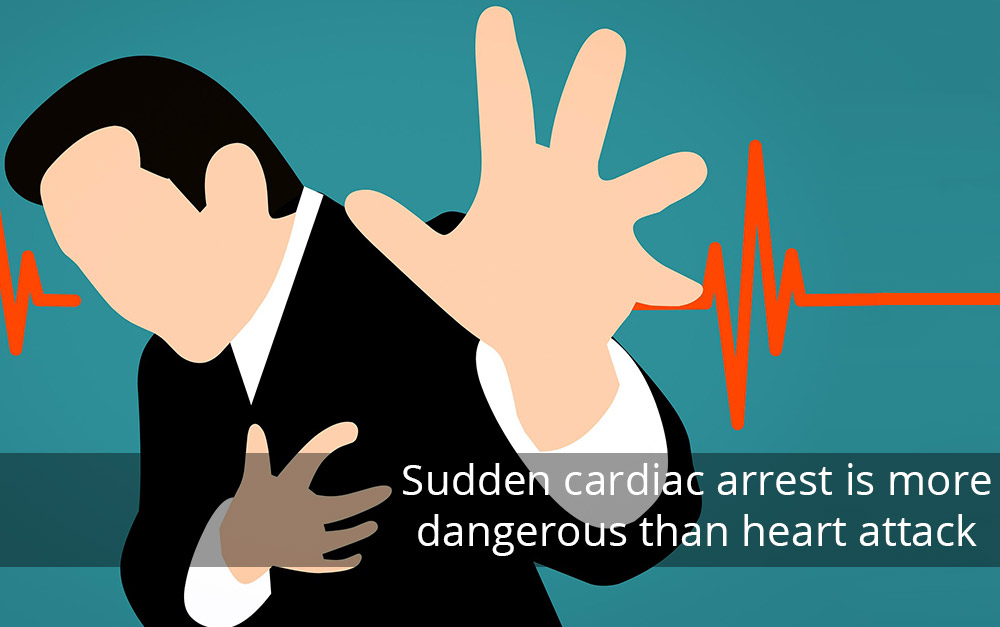We often hear of people dying in sleep. But, do we have an understanding of what can cause this sudden death? In most cases, the cause is sudden cardiac arrest due to an undetected heart rhythm disorder, or an underlying coronary artery disease.
In India, however, there is limited awareness both among people and healthcare providers about mechanisms needed to be adopted to reduce risk of sudden cardiac death and save lives.
There is a need to talk about the importance of timely identifying and treating patients at high risk of sudden cardiac death.
Sudden cardiac death (SCD) is defined as death which occurs within one hour of onset of symptoms due to cardiac causes. In USA about 350,000 deaths occur every year which are sudden. While we do not have consolidated statistics for India, clinical evidence suggests the numbers of people dying a sudden death due to heart ailments is high. Most important cause of sudden death in India is coronary heart disease or artery blockage but very few people understand the concept of sudden cardiac death or do anything to mitigate their risks.
In many cases, especially in smaller towns patients do not report fainting episodes, and carry on with their lives after regaining consciousness. There could be several reasons for a person passing out including a heart rhythm disorder coming from lower chambers of heart which can turn fatal if ignored. If the predictors are detected on time, the sudden cardiac arrest can be prevented by implanting a pacemaker-like device called ICD (Implantable Cardioverter Defibrillator) under the skin (usually below the collarbone) to send life-saving electrical signals that bring the heart back to a normal rhythm whenever abnormal heart rhythm is detected.
If you have a history of coronary artery disease, a record of high blood pressure or cholesterol, or a tendency towards diabetes or obesity, you are at a higher risk of sudden cardiac arrest. People who smoke, have family history of irregular heart rhythm or sudden cardiac death are other groups who have higher chance of sudden cardiac death.
Also, chances of sudden cardiac arrest are higher in people whose ejection fraction is less than 35% or who have history of fainting intermittently. Ejection fraction is a measure of the heart’s pumping power. A healthy person’s ejection fraction ranges between 60-70%. This is diagnosed on performing ECHO.
A sudden cardiac arrest occurs when the electrical impulse system of the heart malfunctions, disrupting regular heartbeat. It is more dangerous that heart attack because the rate of survival in case of sudden cardiac arrest is very low. Implanting an ICD in persons at high risk of sudden cardiac arrest can save lives. The key lies in improving identification of persons at high risk and recommending them for ICD implantation in time. Another important aspect of prevention is preventing coronary artery disease.
The single most important and cost-effective way to prevent sudden cardiac death is to prevent damage to heart which occurs due to heart attacks caused by blockages in the arteries. Cardiovascular disease is a huge health burden in India, magnified by the changing lifestyles, increase in sedentary jobs and lack of physical activity.
How to Reduce the Risk of Sudden Cardiac Arrest:
Control your weight: People who are over overweight especially at the abdomen have high risk of cardiovascular disease. Control diabetes, hypertension and LDL. Diabetes, hypertension and bad cholesterol magnify risk of both coronary artery disease and sudden cardiac arrest.
Exercise: 45 minutes of moderate daily exercise, at least 5 days a week, performing yoga or meditation, will go a long way to prevent heart attacks & sudden cardiac death.
Avoid Smoking: Smoking increases risk of coronary heart disease by narrowing arteries over a sustained period of time. Quitting immediately cuts the risk.
Managing heart health: People who already have suffered damage to their left ventricle (Ejection Fraction 35 % or less) can prevent sudden death by implantation of small pacemaker like device called ICD. ICD is highly effective device which can revive more than 95% of victims who suffer from cardiac arrest.
Want to write for InnoHEALTH? send us your article at magazine@innovatiocuris.com
Read all the issues of InnoHEALTH magazine:
InnoHEALTH Volume 1 Issue 1 (July to September 2016) – https://goo.gl/iWAwN2
InnoHEALTH Volume 1 Issue 2 (October to December 2016) – https://goo.gl/4GGMJz
InnoHEALTH Volume 2 Issue 1 (January to March 2017) – https://goo.gl/DEyKnw
InnoHEALTH Volume 2 Issue 2 (April to June 2017) – https://goo.gl/Nv3eev
InnoHEALTH Volume 2 Issue 3 (July to September 2017) – https://goo.gl/MCVjd6
InnoHEALTH Volume 2 Issue 4 (October to December 2017) – http://amzn.to/2B2UMLw
InnoHEALTH Volume 3 Issue 1 (January to March 2018) – https://goo.gl/fksdQx
Connect with InnovatioCuris on:
Facebook: https://www.facebook.com/innovatiocuris
Twitter: https://twitter.com/innovatiocuris
LinkedIn: https://www.linkedin.com/groups/7043791
Stay updated about IC, visit: www.innovatiocuris.com

